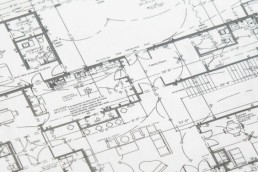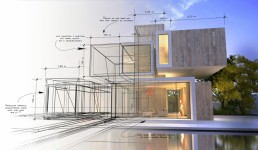Design 2021: Design like the pros now with the right software
Architect offices, kitchen studios, garden design , Interior design – in many professions it has become standard today to make 3D presentations. And since more and more people work in their home offices, it is also necessary to install suitable design software on the PC that enables both 2D and 3D designs. We explain what so-called 3D CAD software is, who needs it and what you can do with it.
Perfect design with 3D CAD software
When an architect has designed a house, he no longer presents it to the client as a drawing or as a cardboard model true to scale; he creates an absolutely realistic-looking 3D model on the computer. This can be viewed from all sides at the click of a mouse and the house can be entered virtually. A simple keystroke is all it takes and other doors are fitted, the roof is a different colour, an additional panorama window appears as if by magic. It is the same with the interior design. And even with Garden design 3D presentations are now commonplace. Garden novelties or home trends are made visible virtually as if they were „real“, making purchasing decisions and planning much easier. The customer sees what he or she is getting, and changes can be made at the click of a mouse. All this works with good 3D CAD software – this computer-aided technology for drawing, developing and designing replaces manual drafts and automates the process, which represents all objects three-dimensionally.

Two-dimensional vs. three-dimensional - the differences
Basically, every drawing is a two-dimensional model. It is flat, having only height and width as dimensions. 3D images, on the other hand, are three-dimensional, they increase the perception of depth and thus appear more vivid. 2D CAD software creates two-dimensional (flat) objects from given basic objects such as straight lines, circles, ellipses, etc. 2D images are made by drawing three drawings – front view, side view, top view – according to the rules of trigonometry The 3D CAD software builds up the same geometric objects in three-dimensional form. This allows, for example, sectional views and elevations, technical drawings, architects‘ drafts, interior designs or landscapes to be represented realistically in three dimensions.
3D techniques for the computer
With 3D CAD software, there are different approaches to creating 3D models. The three most common versions are:
- Wire model: With this technique a very high transparency is possible. The wire model in the 3D technique requires only a short computing time.
- Surface model: Visible surfaces are represented here as coloured, interconnected polygons. In order to work with a surface model, an edge model or a wireframe model must first be available, in which each individual polygon has its own colour.
- Solid model: This technique, also called body model, creates 3D models with a very accurate approximation to reality.

Top 3D CAD software for professionals and beginners
There are numerous 3D CAD softwares based on different 3D techniques that are more or less user-friendly. Two of the leading software are:
- Architect 3D from Avanquest
Header image: © 4th Life Photography, stock.adobe.com
